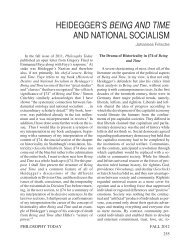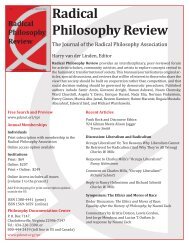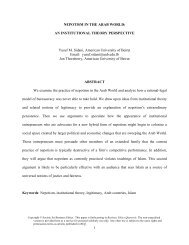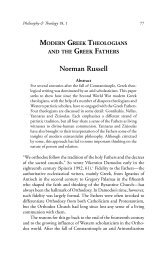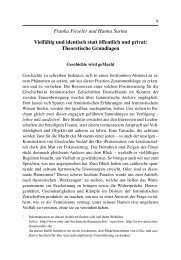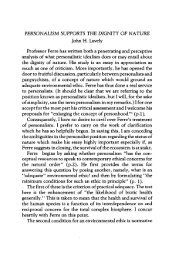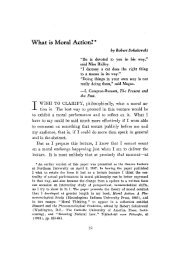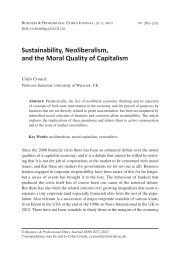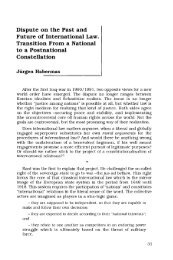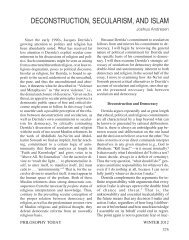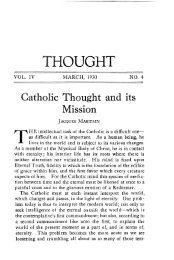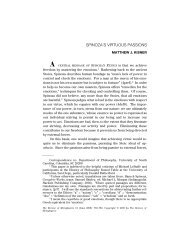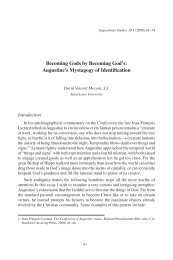Perverted Conversions: - Philosophy Documentation Center
Perverted Conversions: - Philosophy Documentation Center
Perverted Conversions: - Philosophy Documentation Center
You also want an ePaper? Increase the reach of your titles
YUMPU automatically turns print PDFs into web optimized ePapers that Google loves.
— 134 —<br />
Rachel Walsh<br />
• • •<br />
. . . torture torture video panopticon prisoners speak digitally on cell<br />
phones home teleprompting images rosie is riveted torture torture<br />
woman’s place is in the house of horrors howling we have met the<br />
Frankenstein monster and she is us torture torture me rollin over human<br />
rights gangstah style meanwhile back at the ranch the branding iron’s on<br />
fire torture torture hard to define but i known it when i obscene it . . .<br />
— Evie Shockley, “a thousand words”<br />
In the almost four years that have passed since the publication of the Abu Ghraib<br />
prison photographs, the images and the methods of torture at Abu Ghraib have<br />
obtained an iconic status, serving alternately as the disavowed but persistent trademark<br />
of the Bush administration’s reign, a guidebook for the television show 24,<br />
and an appropriated sign that for many Iranians and Iraqis defines and indexes<br />
the “triumph” of Western democracy abroad. The images, so grossly staged and<br />
deliberately orchestrated, depict the reduction of bodies to texts that are made to<br />
signify a national narrative of the sovereign vs. the Islamic/terrorist Other. Yet, they<br />
also reveal and can be situated within a larger narrative of the Enlighten(ed)ment<br />
West’s construction of the pre-modern yet treacherously post-modern Islamic Other.<br />
I. The Limitations of Secular Liberalism: Icons of Violence and<br />
Civilizational Speech Acts<br />
This century has been inaugurated by a post-Enlightenment crisis that has exposed the<br />
limitations of a secular, Euro-American liberalism. This liberalism, as Wendy Brown<br />
observes, extends cultural tolerance (a term that maintains a colonial relationship<br />
between the Western subject who tolerates and the cultural Other who is tolerated)<br />
only to those who do not insist upon their difference from a secular liberalism. Under<br />
the auspices of a universal humanism, Western liberalism denies the civilizational<br />
discourses and their accompanying imperial politics that secure the positions of the<br />
tolerant Western subject and the irrational, cultural Other. 1 Yet a cursory inventory<br />
of recent instances of Euro-American speech acts reveals how these positions are<br />
discursively produced and performed. Although more liberal journalists decry the<br />
fact that the terms “Islam” and “fundamentalism” and “terrorism” have been inextricably<br />
linked, many American and European journalists were perplexed by the riots<br />
that ensued after caricatures of the Prophet Mohammed were published in Dutch<br />
1. Wendy Brown argues, in Regulating Aversion: Tolerance in the Age of Identity and Empire<br />
(Princeton: Princeton University Press, 2006), that the discourses of tolerance mask<br />
imperial politics by marking the Other as the subject with culture, while Western powers<br />
who tolerate are posited as neutral entities without culture.



